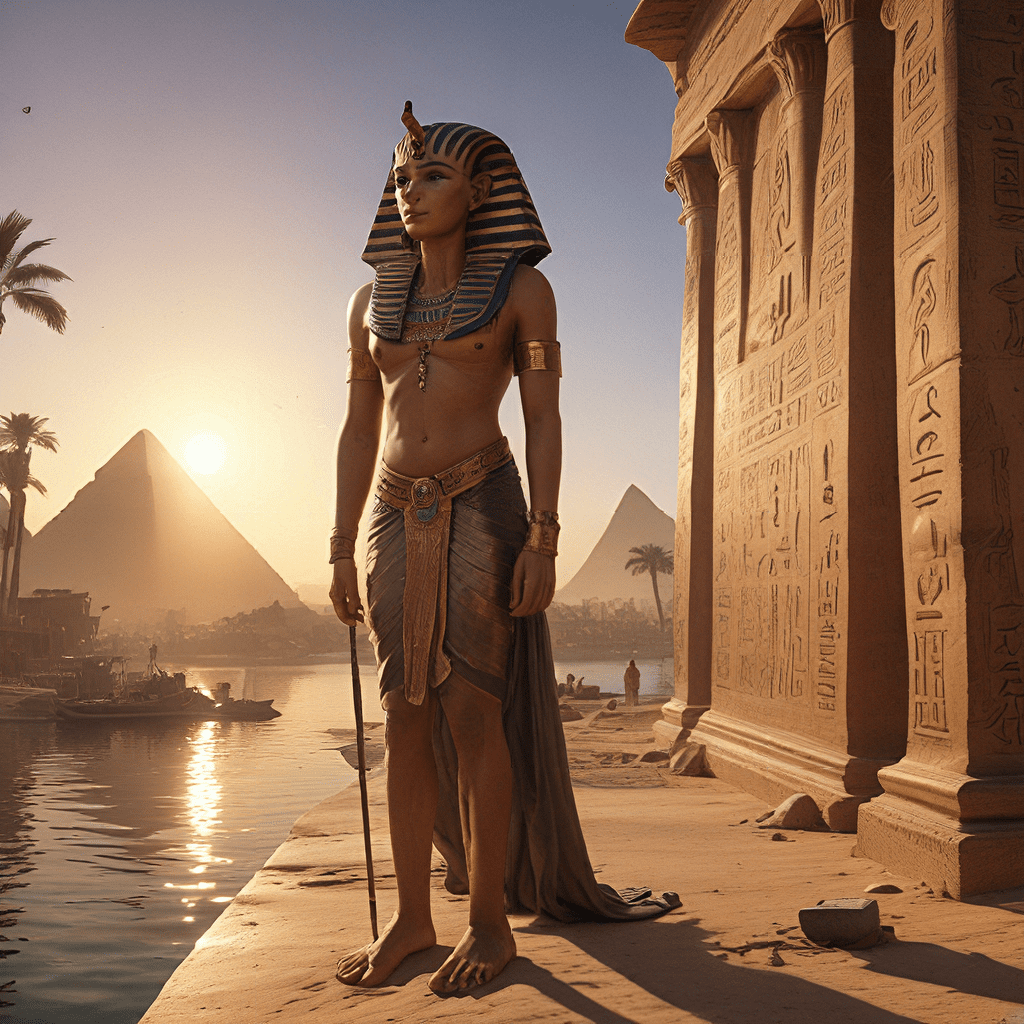The Egyptian Afterlife: A Journey to the Other Side of the Nile
The ancient Egyptians believed that life continued after death in a realm called the “Duat,” a mysterious and complex underworld. This belief shaped their lives, their rituals, and their art, offering a glimpse into their profound understanding of the cosmos and their yearning for eternal existence.
1. The Land of the Dead: Introducing the Afterlife
The Egyptians envisioned the afterlife as a mirror image of earthly life, a place where the deceased continued to exist in a spiritual form. This otherworldly realm was not just a place of darkness and shadows, but a vibrant and structured landscape populated by gods, goddesses, and mythical creatures. The Duat, the land of the dead, held a river called the River of Souls, a gateway to judgment, and various chambers and palaces where the deceased journeyed and transformed.
2. The River of Souls: Crossing the Styx, Egyptian Style
The River of Souls, a celestial waterway, served as the primary passage to the afterlife. It was a symbolic journey, mirroring the Nile’s flow, the lifeline of ancient Egypt. Like the Greek ferryman Charon, the Egyptians had their own boatman, known as “the Ferryman,” who guided the souls across the river in a divine boat. The Ferryman was a divine figure, often depicted as a jackal-headed god, who would only allow souls to board who had the necessary preparations and rituals completed.
3. The Weighing of the Heart: Justice in the Afterlife
Once across the river, the deceased soul faced a crucial judgment. The Egyptians believed that after death, the soul was weighed against a feather, a symbol of truth and balance. This weighing of the heart took place in the Hall of Truth, where the god Anubis, the protector of the dead, oversaw the process. A heart heavier than the feather indicated a life filled with wickedness and evil deeds, leading to a fate of being devoured by the “devourer” (Ammit), a monster with the head of a crocodile, the body of a lion, and the hindquarters of a hippopotamus.
4. The Hall of Truth: Truth and Judgement
The Hall of Truth was a solemn and intimidating chamber where the deceased stood before the divine court, presided over by Osiris, the king of the underworld. Here, the deceased soul had to recite the “Negative Confession,” a declaration of innocence, proclaiming they had not committed any sins. The soul’s fate rested in the hands of Osiris, who, after reviewing the heart’s weight, would decide their ultimate destiny.
5. The Book of the Dead: A Guide to the Afterlife
The Book of the Dead, a collection of spells, hymns, and magical formulas, served as a guide for the deceased through the afterlife. It contained instructions, prayers, and incantations, designed to help the soul navigate the dangers of the underworld, appease the gods, and gain entry into the realm of eternal bliss. These texts were often inscribed on papyrus scrolls, placed in tombs, and read aloud by priests during burial ceremonies.
6. The Underworld: Meeting Osiris, Ruler of the Dead
The Underworld, a realm of mystery and wonder, was ruled by Osiris, the god of the afterlife, and his wife, Isis. Osiris was depicted as a green-skinned god, often holding a crook and a flail, symbols of power and authority. The underworld was a journey, where souls encountered various challenges, perils, and divine figures. It was a place of transformation, as the soul, through the trials and tribulations, shed its mortal shell and prepared for a new existence.
7. A New Form of Existence: The Afterlife as a Transformation
The Egyptians believed that the afterlife was not just an extension of earthly life but a transition into a new form of existence. The deceased soul, purified and transformed by the trials of the underworld, would then reside in the Field of Reeds, a paradise filled with abundance and bliss. This afterlife was a place of eternal peace, contentment, and reunion with loved ones who had passed before them.
8. The Role of Gods and Goddesses: Guardians of the Afterlife
The Egyptian pantheon was rich with deities who played significant roles in the afterlife. Beside Osiris and Isis, the deities of the underworld included Anubis, the god of mummification and the afterlife; Thoth, the god of knowledge and wisdom, who judged the deceased’s actions; and Horus, the god of kingship, who protected the deceased against evil spirits. These gods, along with other divine figures, guarded the underworld, ensuring justice, offering guidance, and protecting the souls on their journey.
9. Ancient Beliefs and Rituals: Preparing for the Journey
The ancient Egyptians believed that proper preparation for the afterlife was crucial. They practiced elaborate rituals and customs designed to guide the deceased on their journey to the other side. Mummification, a complex process, preserved the body for the afterlife, ensuring its preservation for the soul’s return. Tombs, decorated with intricate paintings and hieroglyphs, were constructed as sanctuaries for the deceased, providing a final resting place and a space for offerings and remembrance.
10. The Enduring Influence: Egyptian Afterlife Beliefs Today
The Egyptian belief in the afterlife has influenced our understanding of death and the world beyond. The concept of judgment, the notion of a spiritual existence, and the idea of a paradise or a punishment after death, are all rooted in ancient Egyptian beliefs. While the specific details of their beliefs may be lost to history, the underlying themes of justice, transformation, and eternal existence continue to resonate with humanity today.




